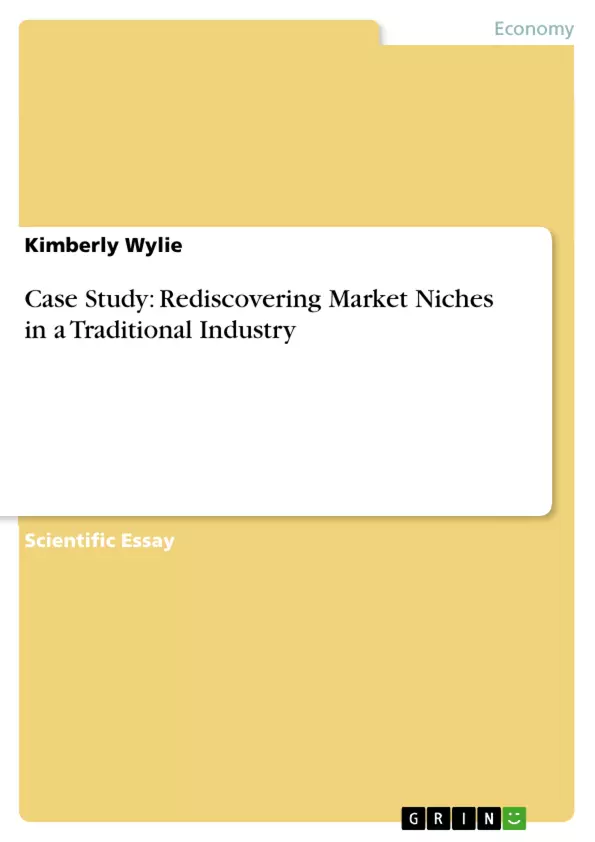In Jingdezhen, China, fine porcelain has been manufactured for 2,000 years. One would think that an industry that has lasted two millennia would have such a market dominance that few, if any, competitors could be a serious threat. However, this is not the case. For the porcelain manufacturers of Jingdezhen, competition has become so fierce that the innovators of the industry have now fallen by the wayside. This paper will discuss this informative case study. Case Study: Rediscovering Market Niches in a Traditional Industry
Inhaltsverzeichnis (Table of Contents)
- Abstract
- Introduction
- Jiangdong Crystal-color Art and Crafts Co. Ltd
- The Jingdezhen Region
- Niche Markets
- Challenges
Zielsetzung und Themenschwerpunkte (Objectives and Key Themes)
This case study examines the challenges faced by the porcelain industry in Jingdezhen, China, where competition has intensified, leading to decreased quality and a loss of market share. The paper focuses on the success story of Jiangdong Crystal-color Art and Crafts Co. Ltd. (JCAC) and explores the potential for other manufacturers to regain market positioning.
- The decline of the Jingdezhen porcelain industry due to increased competition.
- The success of JCAC through innovation, government endorsement, and niche market targeting.
- The need for Jingdezhen manufacturers to identify and exploit new market niches.
- The challenges of overcoming the perceived inferior quality of Jingdezhen porcelain.
- The potential for the corporate market as a viable niche for Jingdezhen manufacturers.
Zusammenfassung der Kapitel (Chapter Summaries)
- Abstract: The abstract provides an overview of the case study, highlighting the challenges faced by the porcelain industry in Jingdezhen and the success of JCAC.
- Introduction: This chapter details the historical context of the Jingdezhen porcelain industry, emphasizing the fierce competition it currently faces from both domestic and international manufacturers.
- Jiangdong Crystal-color Art and Crafts Co. Ltd: This chapter explores the factors behind JCAC's success, including its innovative product, government endorsement, and strategic pricing.
- The Jingdezhen Region: This chapter examines the broader context of the Jingdezhen region, outlining its historical and economic ties to the porcelain industry and the shared objective of regaining market positioning.
- Niche Markets: This chapter discusses the importance of identifying and exploiting niche markets to gain a competitive edge. It explores potential strategies for Jingdezhen manufacturers, including leveraging government relationships, targeting collectors, and pursuing the corporate market.
- Challenges: This chapter examines the challenges that Jingdezhen manufacturers face in their efforts to regain market positioning. These challenges include overcoming the stigma of inferior quality, achieving consistent quality, and competing effectively with rivals.
Schlüsselwörter (Keywords)
This case study explores the Jingdezhen porcelain industry, focusing on competition, innovation, niche market identification, product quality, and the challenges faced by manufacturers in regaining market positioning. Key themes include the success of JCAC, government endorsements, and the potential for the corporate market as a viable niche.
- Citar trabajo
- Kimberly Wylie (Autor), 2004, Case Study: Rediscovering Market Niches in a Traditional Industry, Múnich, GRIN Verlag, https://www.grin.com/document/57790



